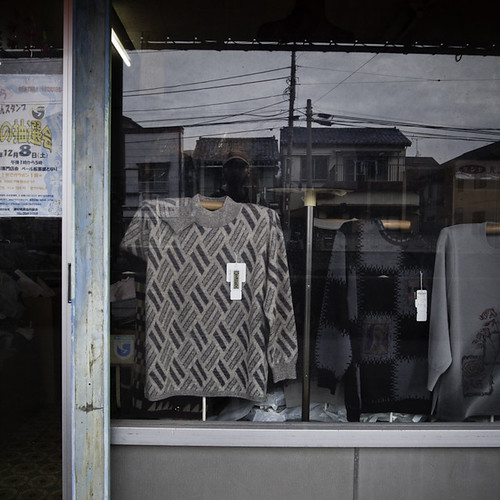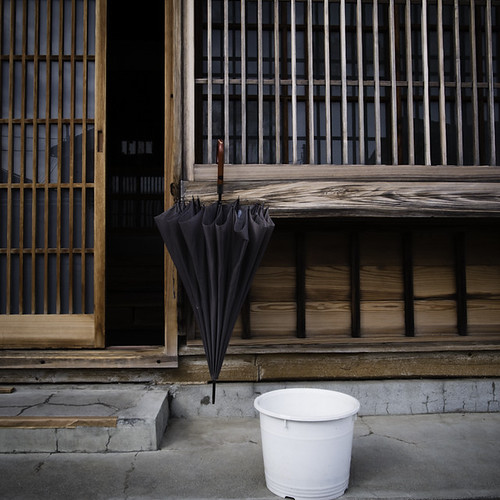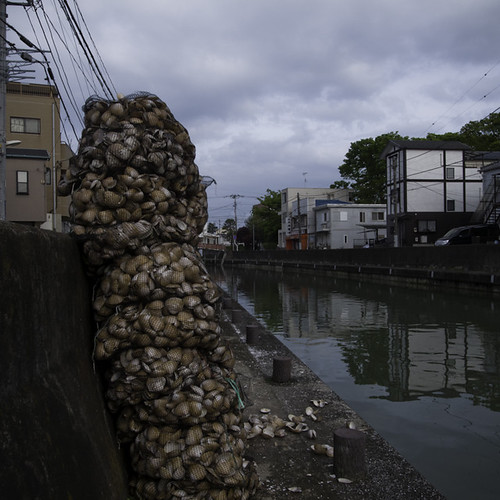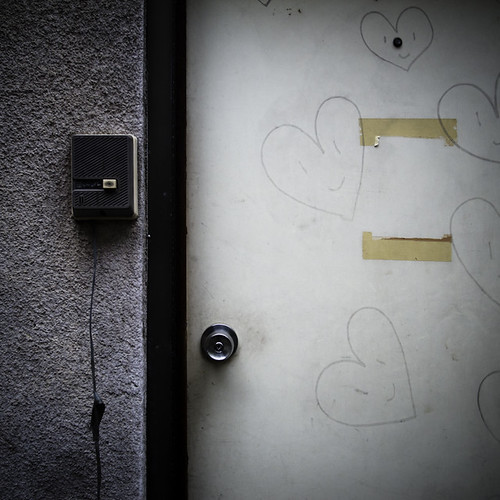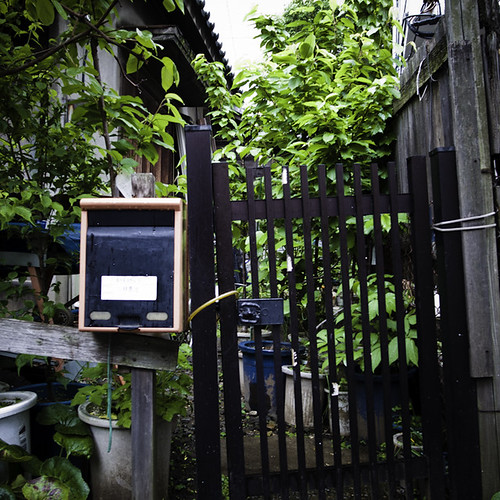Isotta Dardilli: Queen of Italian Graphic Design and All Around Fabulous Person
Sunday, May 6th, 2012Isotta Dardilli’s Poster design for the COLORS of Money Poster, 2009
Todays’s Lucid Thoughts post is something a little bit different. Rather than featuring a photographer’s work I have decided to showcase the work of Isotta Darilli is a queen of Italian graphic design. She has been one of the coolest people I have met because of my involvement with Fabrica, and we have maintained an artistically creative friendship ever since our first emails about 5 years ago.
I met Isotta when she was working for FABRICA in Italy. Fabrica is Benetton’s communication research centre lab where art is encouraged through various projects. Fabrica is responsible for the amazing COLORS Magazine. It is though a joint project of COLORS magazine that I first met Isotta.
I had submitted a blank COLORS NOTEBOOK for consideration in their collection. I filled the the newsprint blank pages with stencils, photographs and words. I was shocked to learn 6 months latter that mine had been chosen to tour with a COLORS Notebook world exhibition. I was further dumfounded to learn that my images would be published in the FACES collection of the COLORS notebook project. Because of this work, I formed a tight bond with Isotta.
Isotta’s heart is as big and fresh as her graphic work. She doesn’t consider herself a photographer but she loves to take snap shots of her friends. Her passion for graphic design has led her to take a short term teaching position this summer at Shanghai University of Fine Art, sharing her love of graphic design with Chinese students.
I invite my Lucid Communication readers to wander through Isotta’s website Isotype to get a full feel for her work. I am inspired by looking at her images, and I am so thankful for the warmth and friendship she has shown me and my photography. I was fortunate to have the opportunity to interview Isotta for the Lucid Thoughts blog.
Please take a minute and introduce yourself to Lucid Communication?
Behind the scene I’m a bear. A beach bear, who loves the sound of the sea more than anything else. I’m lazy and I love to stay at home, watch movies and dream of an imaginary life. I love to spend my time with friends too, drinking red wine and smoking cigarettes. I love also to waste time.
Where do you like best to take pictures?
I’m honestly not a good photographer, so any place could be good or bad, in any case my pictures will be bad. I studied photography in high school, but I lost the knowledge on the way, because I have discovered art and graphic design. I studied with an analog camera, developing my pictures in my bathroom (my mother was always annoyed about it, because she couldn’t enter in the bathroom for hours and hours). Anyway, I really love to watch pictures from other people.
What was your first camera?
My first camera was a very nice camera and I still have it in storage somewhere. It was a really old Nikkormat.
What camera do you like to use now, and why?
I don’t have any cameras now, I just use an iPhone. I really love to take pictures with my mobile phone…eheh.
Does your design and your photography work together?
Yes, a lot of my work is connected with photography, but every time I have asked a good photographer to take the pictures for me. I think that this is a good way to work. I leave the photography to someone who can do his/her job really well!
editors note: This is good news for all the photographers out there. Isotta knows when to step aside and let a professional photographer take over. In the end it will help take her projects to the next level.
We met because of your work with FABRICA. We first came into contact with the each other because of the COLORS Notebook, and later the FACES book. You spent a long time working with FABRICA. What was it like working for them? How was it working with artists from all over the world?
Working at Fabrica was amazing! I learned a lot of things, a learned to connect with people. I understand the process of how people come to find a solution. I learned that all around the world is full of very very very amazing people, young people, people that have something to say. And, also, I discovered how nice it is to share your opinion with others. Surely with the help of other people your project becomes more beautiful. And I also learned that it is always great to have fun while you are working! If more people had fun while working the world would be much nicer place.
editors note: Lucid Communication made a submission to the Colors Notebook project with little hope of anything coming out of my contribution. I was shocked to find out 6 months later that my notebook had been selected to tour around the world. It eventually led to the publication of the Fabrica book: COLORS NOTEBOOK FACES. which featured a spread of Jacob Schere’s work, along with many other fantastic artists.
Isotta’s own COLORS Notebook
What did you learn from working with FABRICA on the NOTEBOOK project?
I already answered the first part of the question of what it was like to work for FABRICA. For the second part, WOW, it’s a very difficult question. Colors Notebook was a project that I left a piece of my heart and soul with. It’s very hard for me to talk about it, because someone above me took me out of the project to try to do it all himself, and the project died. Because you need a lot of heart to do a project like that. So, it was my passion out of the box. I don’t really know how to explain it, other than it really took a piece of my heart.
I’ve never seen so many people that loved to be part of a project. And, all the people give us such amazing contributions for free. I understand that a lot of people all around the world does’t have any way to express themselves… therefore I wanted to find a way for these people to be able to express themselves the best I could. I would like to emphasize that I took over this project after my colleague, Lorenzo De Rita who invented it and then left FABRICA.
What do you want people to experience when they look at your images?
Are you talking about colors notebook? That people become aware of what is happening beyond their reach.
How has digital design changed the design world and the way that you create?
Probably that you have more options to try to do something. Everything is easier. I discovered that many people are creative and before had no way to be.
You recently founded your own company, What are the goals for Isotype Studio?
I do not know, I’m currently spending a sabbatical moment (smiles!)But the energy here is fantastic, isotype is just a little part of WAX studio…We are only 7 people in total, but the space is place where very cool gypsy like people can come with their laptops and work on their own projects. The people are free to interact and talk together about everyone else’s projects.
Is there anything else you would like to say to the Lucid Communication family?
Spend well your time because life is one and society needs solutions to be able to have a good life!
Where can we see more of your work online?
www.isotype.it (but after the sabbatical year I promise I will update it!!!)
I love his work, he give me a good energy to do my work!
www.sagmeister.com
I would like to express my deepest thanks to Isotta for taking time to share her thoughts and art with Lucid Communication. I look forward to more interaction between us in the future. In the meantime please browse her website, and take a look at a sample of her work below.
Tallulah Gallery Illustration
Tee Shirt Design for Nivea
The Faces book that Isotta curated, and featured work by Jacob Schere
Book Designs for Designer Block
CD Design for The Quick Brown Fox
Art Direction for the COLORS Money Exhibition
Art Direction for Canova Show for Fabrica
All images are used courtesy of Isotta Dardilli from her website http://www.isotype.it/










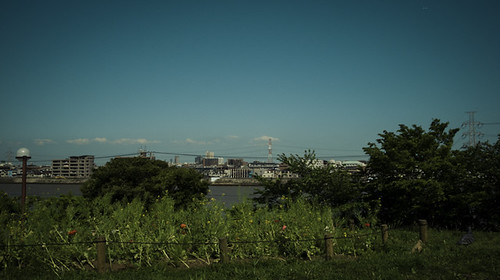
![South South Kasai [南南葛西]](http://farm8.staticflickr.com/7063/7144203367_e1913acc1c.jpg)
